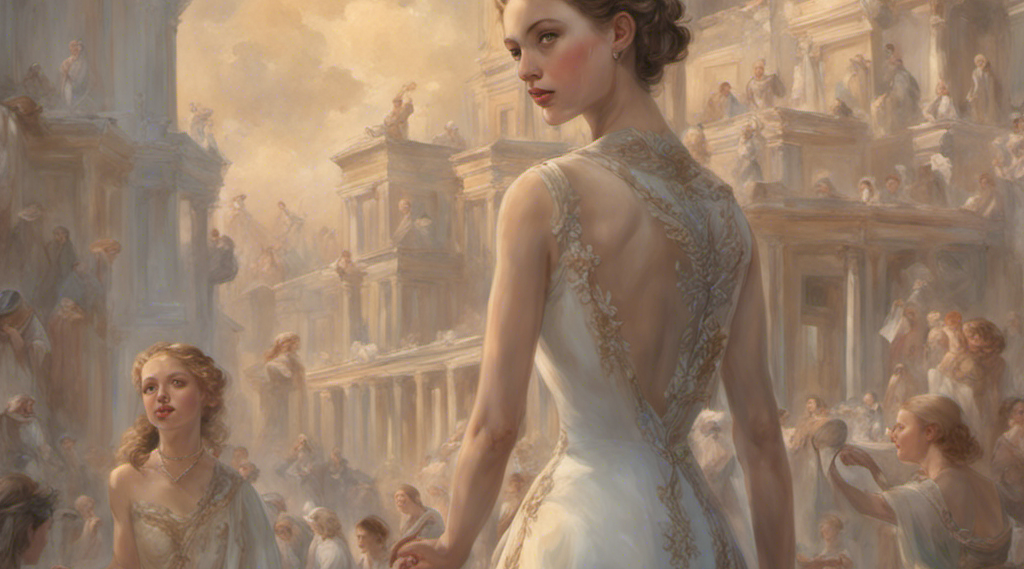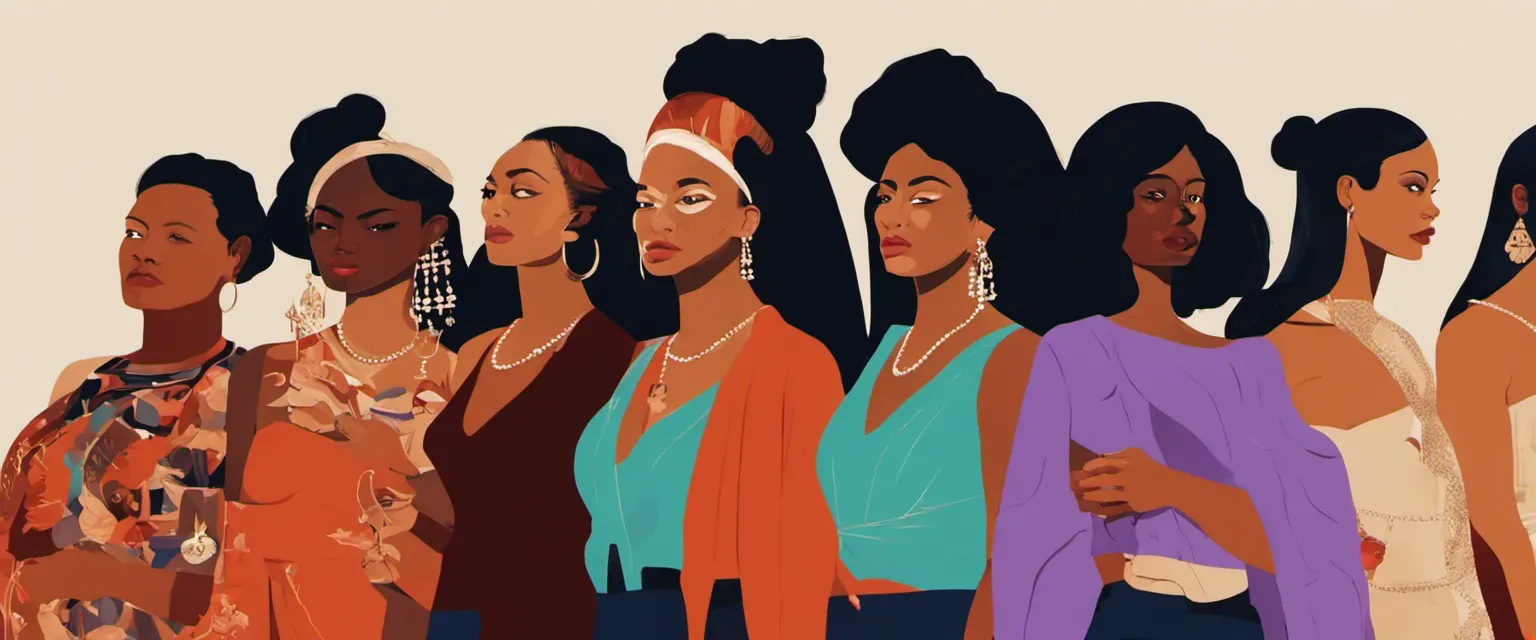Pride and Prejudice: Feminism at Its Core

In Jane Austen’s timeless classic, Pride and Prejudice, the characters navigate a society fraught with social norms and expectations, leaving little room for independence or agency for women. As we delve into the pages of this beloved novel, we are transported to a time when feminism was unheard of, and yet, its seeds are subtly sown throughout the pages. Austen’s astute portrayal of her female protagonists challenges societal conventions, shedding light on the limitations placed upon women in the early 19th century. Join us as we explore the echoes of feminism that resound within the pages of Pride and Prejudice, and the relevance it continues to hold in our modern world.
What is Feminism
Feminism is a social and political movement that advocates for equality between genders, promoting the rights and interests of women. It strives to dismantle systems of oppression and discrimination based on gender and challenge patriarchal norms that restrict women’s opportunities and autonomy. Feminism seeks to create a society where all genders have equal rights, opportunities, and representation in all spheres of life, including politics, the workplace, education, and within personal relationships. It also recognizes the intersecting impacts of gender with other forms of discrimination such as race, class, sexual orientation, and disability, and aims to address these intersections to achieve a more inclusive and equitable society for all.
Why is Feminism Important to Us?
Feminism is important to us for several reasons:
1. Equality: Feminism advocates for equal rights and opportunities for all genders. It challenges and aims to dismantle the patriarchal systems that have historically oppressed and marginalized women. By striving for gender equality, feminism works towards creating a fair and just society where everyone’s rights and experiences are valued and respected.
2. Empowerment: Feminism seeks to empower women and other marginalized genders by promoting their voices, autonomy, and agency. It encourages individuals to challenge societal expectations, norms, and stereotypes that have limited and constrained their choices and aspirations. Feminism recognizes the importance of self-determination and believes that everyone should have the right to decide their own path in life.
3. Intersectionality: Feminism acknowledges the intersecting identities and experiences that individuals have, such as race, ethnicity, class, sexuality, disability, and more. It emphasizes the need to consider these intersectional experiences in fighting for gender equality. By taking an intersectional approach, feminism aims to address the specific challenges faced by different groups and ensure that all individuals have an equal opportunity to thrive.
4. Social and Legal Change: Feminism has played a crucial role in driving significant social and legal changes over the years. It has fought for women’s suffrage, reproductive rights, access to education, healthcare, and workplace equality. Feminist movements have also contributed to raising collective awareness about issues such as sexual harassment, domestic violence, and gender-based discrimination. By advocating for change within institutions and society, feminism has helped pave the way for a more inclusive and equitable world.
5. Building Solidarity: Feminism encourages building alliances and solidarity among people of all genders. It recognizes the interconnected nature of various forms of oppression and seeks to foster collaboration in the pursuit of justice and equality. Feminism recognizes that by standing together, people can amplify their voices, share experiences, and collectively work towards a more equitable and inclusive society.
Unlocking Feminism from Pride and Prejudice

Pride and Prejudice Introduction
Pride and Prejudice by Jane Austen is a classic novel set in 19th-century England and follows the story of the Bennet family. The novel primarily focuses on the romantic journey of Elizabeth Bennet, the second eldest daughter and the protagonist.
The Bennet family consists of Mr. and Mrs. Bennet and their five daughters: Jane, Elizabeth, Mary, Catherine, and Lydia. The family’s goal is to find suitable husbands for their daughters, as the estate they live on is entailed and will pass to a male relative upon Mr. Bennet’s death.
Enter Mr. Bingley, a wealthy and eligible bachelor who moves into the neighborhood, immediately catching the attention of Mrs. Bennet, who hopes to marry one of her daughters to him. Bingley is accompanied by his aloof and proud friend, Mr. Darcy. While Bingley’s affections fall for Jane, Darcy develops an initial prejudice against the lively and outspoken Elizabeth.
As the plot unfolds, Elizabeth discovers the true nature of Darcy’s character, which complicates her growing feelings towards him. Misunderstandings, societal expectations, and personal pride further complicate the romantic entanglements of the characters. Elizabeth confronts her own prejudices and learns to see beyond the surface, while Darcy learns humility and the value of family and love.
Filled with witty dialogue, social commentary, and memorable characters, Pride and Prejudice explores themes of love, marriage, social class, and personal growth. The novel concludes with Elizabeth’s and Darcy’s eventual understanding and reunion, as they overcome their pride and prejudice to achieve a happy ending.
Feminism Methods
In “Pride and Prejudice,” Jane Austen offers subtle feminist commentary through her portrayal of the female characters and their actions. Here are a few methods of feminism evident in the book:
1. Individuality and Independence: Austen presents her female characters as individuals with their unique personalities, desires, and opinions. They are not defined solely by societal expectations or their relationships with men. Elizabeth Bennet, the protagonist, stands out with her intelligence, wit, and refusal to conform to societal norms.
2. Marriage as a Choice: Austen challenges the notion that marriage is the sole purpose of a woman’s life. Elizabeth, along with her sister Jane, resists the pressure to marry for financial security or social status, instead seeking genuine love and compatibility in a partner. This emphasis on choosing one’s spouse based on personal reasons reflects a feminist perspective.
3. Criticism of Gender Stereotypes: The book often exposes the limitations imposed on women due to gender roles and societal expectations. Characters like Mrs. Bennet, who prioritizes marrying off her daughters regardless of compatibility or happiness, are portrayed as negative examples. Austen challenges these stereotypes and the idea that women should solely focus on finding a suitable husband.
4. Female Empowerment through Intelligence and Wit: Austen’s female characters often use their intelligence and wit to navigate the social expectations and criticism they face. Elizabeth’s sharp tongue and clever remarks challenge the patriarchal system, allowing her to assert herself and challenge societal norms.
5. Sisterhood and Solidarity: The relationships between female characters in “Pride and Prejudice” are crucial in promoting feminism. Through the bond between the Bennet sisters, Austen emphasizes the importance of supporting and uplifting one another. The sisters share their experiences, thoughts, and challenges, forming a network of support to navigate the constraints placed on them by society.
Pride and Prejudice Quotes
Pride and Prejudice quotes as follows:
1. “It is a truth universally acknowledged, that a single man in possession of a good fortune, must be in want of a wife.”
2. “There are few people whom I really love, and still fewer of whom I think well. The more I see of the world, the more am I dissatisfied with it.”
3. “I had not known you a month before I felt that you were the last man in the world whom I could ever be prevailed on to marry.”
4. “A lady’s imagination is very rapid; it jumps from admiration to love, from love to matrimony in a moment.”
5. “I am excessively diverted.”
6. “Our scars make us know that our past was for real.”
7. “I declare after all there is no enjoyment like reading! How much sooner one tires of anything than of a book!”
8. “Angry people are not always wise.”
9. “For what do we live, but to make sport for our neighbors, and laugh at them in our turn?”
10. “I was given good principles, but left to follow them in pride and conceit.”

More Books About Feminism
1. Frida: A Biography of Frida Kahlo” by Hayden Herrera: This book provides a fascinating exploration of the life and legacy of artist Frida Kahlo. As a figure who challenged societal norms and redefined femininity, Kahlo’s story serves as an inspiration for feminists everywhere. Herrera’s meticulous research captures Kahlo’s indomitable spirit and delves into her struggles with identity, art, and love.
2. Notorious RBG: The Life and Times of Ruth Bader Ginsburg” by Irin Carmon: Irin Carmon chronicles the extraordinary life and impact of Supreme Court Justice Ruth Bader Ginsburg. Celebrated as a feminist icon and advocate for gender equality, Justice Ginsburg’s unwavering dedication to women’s rights is an inspiration to all. This captivating biography combines Carmon’s insightful analysis with interviews and commentary, shedding light on the justice’s tireless efforts to challenge gender discrimination throughout her career.
3. Jane Eyre” by Charlotte Bronte: Although a work of fiction, “Jane Eyre” by Charlotte Bronte is often considered a feminist classic. This novel introduces readers to an independent and resilient protagonist who defies societal expectations. Jane Eyre’s refusal to conform to the role of a docile woman and her pursuit of self-respect and true love make this a powerful story of feminist awakening.
4. “We Should All Be Feminists” by Chimamanda Ngozi Adichie: Adapted from her popular TEDx talk, this concise and thought-provoking essay by Chimamanda Ngozi Adichie explores contemporary feminism and the need for gender equality. Adichie emphasizes the importance of recognizing and challenging damaging gender stereotypes that hinder progress. Highly accessible, this book serves as an excellent starting point for those interested in understanding the fundamentals of feminism.
5. The Second Sex” by Simone de Beauvoir: Often regarded as a foundational text of feminist philosophy, “The Second Sex” offers a comprehensive analysis of women’s oppression and existentialist feminism. Beauvoir’s groundbreaking work critiques and challenges societal constructs that maintain women’s subordination. Written with intellectual rigor, this book is a seminal feminist text that delves into the complexities of power, sexuality, and emancipation.
These five books offer a diverse range of perspectives on feminism, exploring the lives and experiences of extraordinary women, fictional and real, throughout history. Each of these works brings unique insights and inspires readers to question gender norms and advocate for gender equality in their own lives.



0 Comments